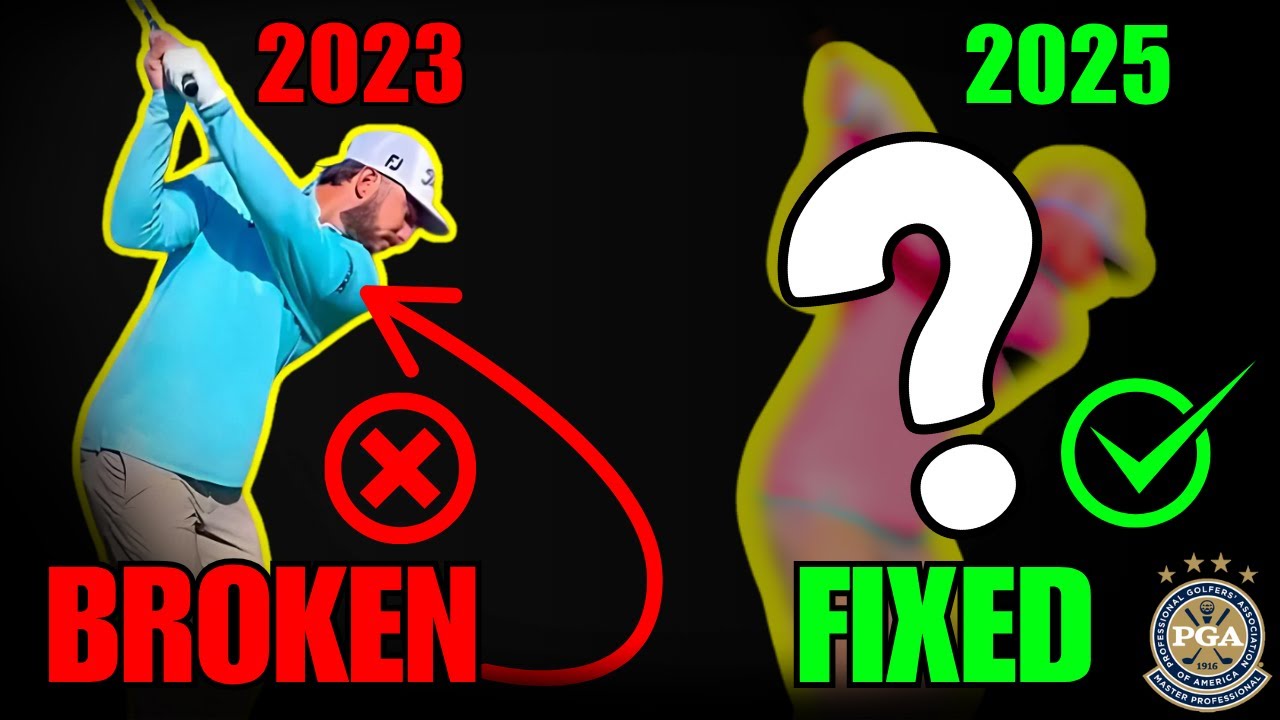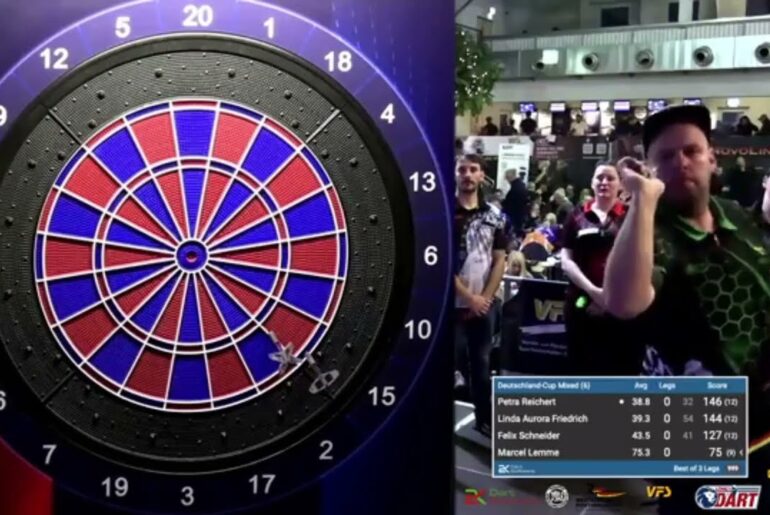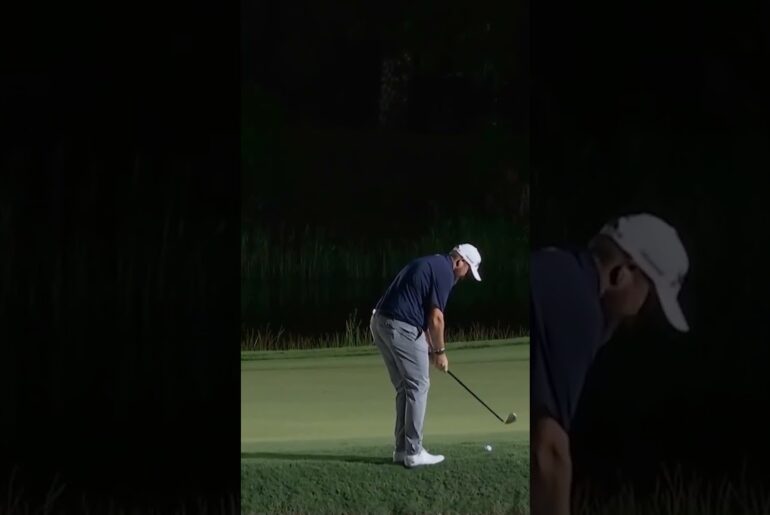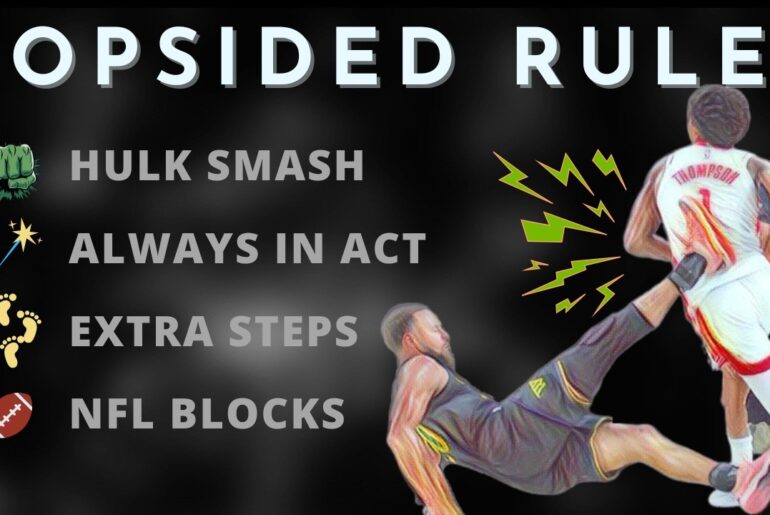Max Homa made a big swing change in 2025 — but it wasn’t about reinventing the wheel. It was about going back to what worked.
After struggling with consistency, Homa and his coach made a crucial adjustment: steepening his shoulder plane and returning to a motion that felt more natural — more like his 2022–2023 form.
This video breaks down:
Why his old swing felt “broken”
How increased shoulder tilt helped bring the club back in front of him
The simple move that fixed his transition and face control
Why this change works for players who want power without over-rotation
If you’ve ever made swing changes that felt unnatural or got worse before they got better… this one’s for you.
🎥 Join us for Sunday Red Light Live – a FREE livestream reviewing subscriber swings.
📩 Want your swing reviewed? Send your videos to: https://form.jotform.com/251687122934158
Join this channel to help support the children in Cape Flats, South Africa:
https://www.youtube.com/channel/UCaDe37093HftJsFzrmLQUZA/join
For information on our development programs around Southern California in Los Angeles, San Diego and the Coachella Valley please visit:
Follow us on Instagram
https://www.instagram.com/lion_family_golf_academies/
Follow us on Facebook:
https://www.facebook.com/lionfamilygolf
#liongolfacademy #hitthebell #subscribe
Ask and ye shall receive. Just remember, sloth love chunk, but sloth hate slice. Today’s video comes from a suggestion yesterday by one of our subscribers, and it comes to us from Zap. Would love to see a Max Homer breakdown of difference between recent format earlier this year. Now, if you’re not familiar, Max has kind of disappeared for a little bit while he’s gone through a swing reinvention. And we’re going to look today at what those changes are, and I think they’re wonderful changes. And you can learn a lot about how setup will influence the abilities to change your tilting, which will also influence your hand path and not relying so much on this timing. And at the top of the game, at the top level in the world, you want to swing with less timing because that will give you in the top 10 more. You start making more cuts and you don’t end up on YouTube hosting your own channel. That’s a different subject. So, I know it’s a little confusing, but let’s just go through these lines real quick to make sense of everything. mellow yellow is going to be the lower plane line. We’ve got a couple of I even reds going on here. But the one I’m not sure what clubs these were, but I measured the angles to at least make sure we’re working with the same angle. So you can see they both have the same forward bend of 131°. So we know that we can kind of look at these swings and see some comparisons and know they’re going to be pretty true. Gumby circle, that green circle, that’s where those two lines would meet. And it’s important to look at this setup change. And then we have the one going straight up and that’s basically the center where the plane line meets and the spine angle meets and that’s going to play a big part too. So initially we can see that there is a little bit of a setup change. The new max on the right side is definitely getting more towards his toes which will do a couple of things. It’ll help him open up some spacing to access more tilting. These changes were made to kind of reduce some cramming down at impact. We know we got more pressure on our toes. Now this creates a little bit more spacing as you turn. Now he doesn’t have to turn as much anymore with his lower body on the left side and because that will allow some spacing for some tilting. So we’re going to look at the tilting and the tilting is the biggest change right now. So if you take a look right about in this region here. Let’s get our tilt check and we’re going to do this in Smirkelton because actually Smirkeleton is kind of tough. We’re going to do this in orange. Now we don’t have an orange name. So if you want to put orange name down in the comments what you think it would be. We have to retire our old orange name. It create too much diversion. But we can see that tilting on the left side versus the tilting on the right side. We already see the tilting on the right side is more perpendicular to his initial spine which is huge because that keeps things related to each other. Now when you increase your tilting as you take that club back your hands will naturally want to go higher. And we can see at the top they are definitely higher which is great. Let’s do that tilt tech again. We can see on the left side of the screen, the right side of the screen at this point, the right side is more perpendicular to his spine angle, which is the goal if you want some sort of robotic motion. Now, remember again, the guys and girls on tour are looking for stuff to be less timing at impact. So, this is great. And we know this because look at the butt of the club on the left side. Notice how it falls in between where that centeredness is. So, technically, the one on the left is like, okay, that club has found the centerness of his setup, which is correct. But the one on the right side has a new setup, but because he’s so forb, there’s no way to get those hands to that center without becoming the old guy on the left side. And that’s the one we’re trying to get away from. So, we’re having a new setup, and we’re going to fight that setup a little bit. But take a look where the but of the club is now. It is much more out in front of his setup. Now, this creates a couple good things. Number one, it’s a little bit steeper because of our tilting. Number two, his hands are more out in front of his body. So when he makes that transition, as you naturally transition, you’re going to tilt a little bit more and your hands will get a little bit lower. Too soon. Now this sounds very much like, oh, the shallow. I hate that word, but this is almost anti-shallow, which is good. I love it. So let’s take a look. Now we have the hands more out in front on the right side of the screen. As we come on down, look at the hands here. They’re definitely out in front. We see the club shaft versus the club shaft. Look at the one on the left side. It’s lower, quicker. He’s going to get trapped. He has to start rotating to get out the way. So, look at the left side of the body. Left side is already trying to rotate to create some spacing and some room for his hands to time the chicken wing. It’s not a chicken wing, but you know what I’m saying. Time the flip. You or I, we’d be chicken winging it, but he he’s just pure. So, as we come on down to impact, we see, look at the spacing on the right side. We see some shadow work between the forearms and the thigh. Right left side of the screen. We were a little trapped. We’re stuck. And then we come on through. Boom. The hands have to go on the left side, but the right side, one frame after impact. Let’s do our patent. What’s up, y’all? Tony from the future editing. I got so caught up on this tilting nonsense. I’ve totally forgot to tell you. Look at his feet. One on the right side still grounded. One on the left side. We see that firing of the right side because he has to clear his hips sooner to create spacing for the hands to come more inside and time the flip. But that’s just to prove a point that setup tilting can help control the feet which then gives you hand path to be a little bit straighter longer and that’s the goal for him. But let’s get back to you know me tilt checking tilting check. So there’s the shoulder tilt on the left side we are at 49. Right side look at that amount of tilt 63 but 14 more degrees of tilt. Now, as a result, when we come on through, take a guess. Left side, hands are going to be lower or higher than the right side. Give you five seconds. Four, three, two, one. Right side. If you guessed hands higher, you are correct because exit path, we see the first side of the hands up over here versus the left side. We see them down over here. So, we are making some pretty nice gains relative to our tilting, which is all stemmed from setup. So, this is why I always tell you in every video, you’ve got to look at your setup. The way you start the swing controls that big power ball that we talked about in yesterday’s video, and from there now, you can work with that a little bit easier based on what you’re trying to accomplish. Either one of these swings, I’ll take in a heartbeat. They’re both solid players, but the one on the right is going to be a little bit more consistent. We’ll take a look as he comes on down the stretch in the next couple of years, but let me know your thoughts in the comments down below. Go ahead and hit that comment as well. Let me know what you want me to show you because I’m here for you. I’ll be gone in the next couple of days. Go on a little trip, but I’ll see you guys in a few days. Other than that, and greens. A huge thank you to these incredible supporters on the screen and to you watching this video. Your support helps us bring our golf curriculum to low-income children around the world at no cost to them, just like our location in Cape Flat, South Africa, in partnership with the Hillard program. Please like, share, and consider subscribing. Together we can give the gift of golf to kids who need it the most. [Music]








29 Comments
Did Max really fix it? And what should we call our orange line? 👇
First for sure!
Lets call it carrot orange
Tiger underwear stripe orange!
Florida orange?
Cal-trans Orange
YES SIR! Thanks for the Max Homa video. Glad hes performing better.
Awesome analysis. Hope he wins with his new swing
Gotta go with the Orange Slice
Dreamsicle Orange. : -)
Garfield Orange?
Tangerine orange!
Orange Crush (I don't know if they still make that) maybe
Sunkist Orange 😎 or Flordia Orange is 👌🏽.
Great take on setup. I need more spacing too
Name for Orange
Orangello 😂
MangoMango
Seeing either swing on its own I don't think I would have been able to notice, but something about the one on the right just looks more "correct"?
mango orange.
Orange bang
Loved his swing before, hopefully the swing changes work for Max, long term, enjoy your break.
Good analysis yes set up,but this also influences sequencing in milliseconds,left his lower body moves either b4 or quicker than upper body right is opposite sequence
unfortunately my tendency is left pic back swing right pic downswing! but im working on it
thanks for all great videos,helped me come third in senior club champs (gave 10 yrs to winner) and gave north wales a thrashing yesterday!
Would you agree that the steeper backswing position only works if it's accompanied by side bend on the downswing?
What happens if you have a steeper position on the backswing (attaining a more perpendicular position with the shoulders/spine angle), but you do not have the capability to side bend through the downswing?
Orange Crush
Jason Orange
Naval Orange. Such a small tweak moving slightly forward. I would have thought being more forward might have a balance issue through the swing where the norm is centre balance on feet? Just wondering if you looked at old swing, you thought it needed a tweak; and would you have pondered the forward slant or something else. Impressive eyes for you coaches; I would never have seen it – most people would not see the forest for the trees.
Orange Julius
I just remembered what orange was can't believe you fired him lol I'm not from the US but staying away from politics no matter how light hearted probably not a bad move lol.
Great video, changes that seem subtle until you point out what Max is working on. Will no doubt feel anything but subtle to him I'm guessing.
Nice accurate analysis. You missed the obvious clothes effect: left = YT channel before first lesson 😀. right = tour pro, expensive pants cut 3 strokes per round.
Morange Orange (more range orange)… and they said it couldn't be rhymed!
I need morange… but wrist, knee, & hip protest pounding balls and $13/pail hurts my backside. backsideside.
🙏 Nice trip & that you don't see this!
I'm just watching the Genesis Scottish Open when some guy called Sam Torrance was commentating (apparently he was pretty good in his day) on Justin Rose's swing calling it a more "conventional" swing… I take this as a slur on us golfers that play "unconventionally"… do they not realise how difficult it is for us fatting, thinning, slicing, hooking and topping the ball but still coming off the course with a smile on our faces, I've seen pros shoot a under par round and look miserable.
Oh to slice the ball off line 200 yards and then get the chance to explore the woods or the fish in the lake is a joy…. they really don't know what they are missing….oh what a marvelous stress relieving game we play compared to the pros, wouldn't change anything 🤔🫣😵💫….. power to the unconventionals..🌟🥳🎊🤩